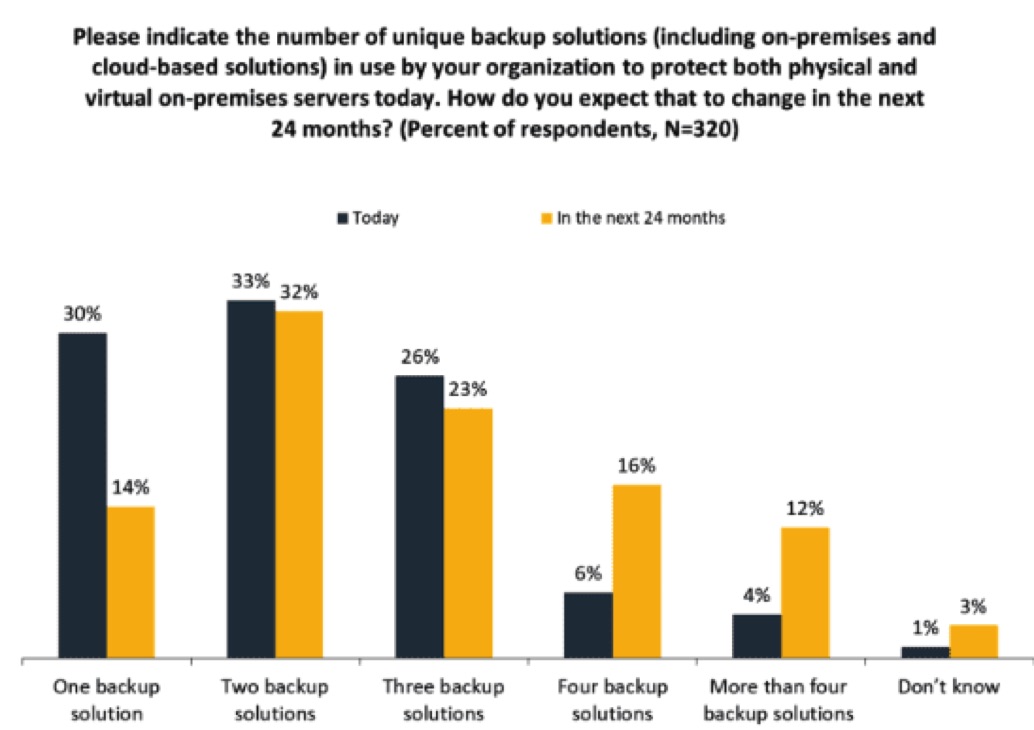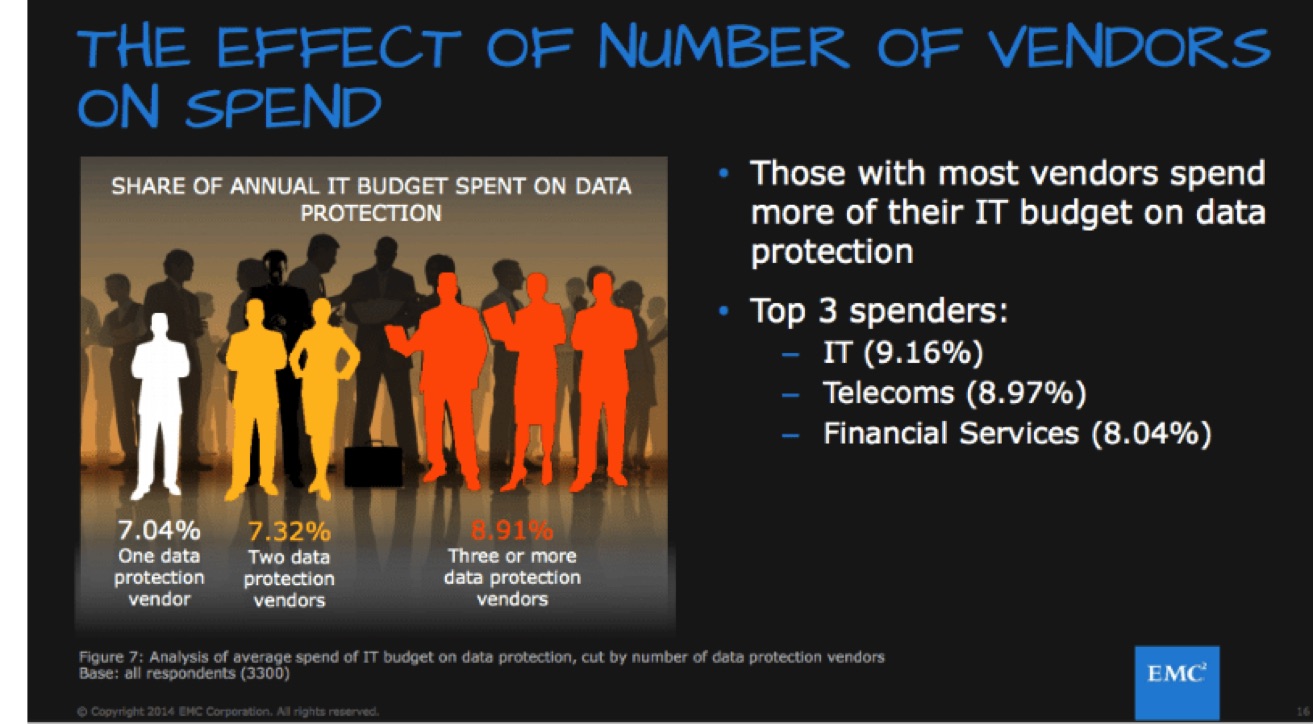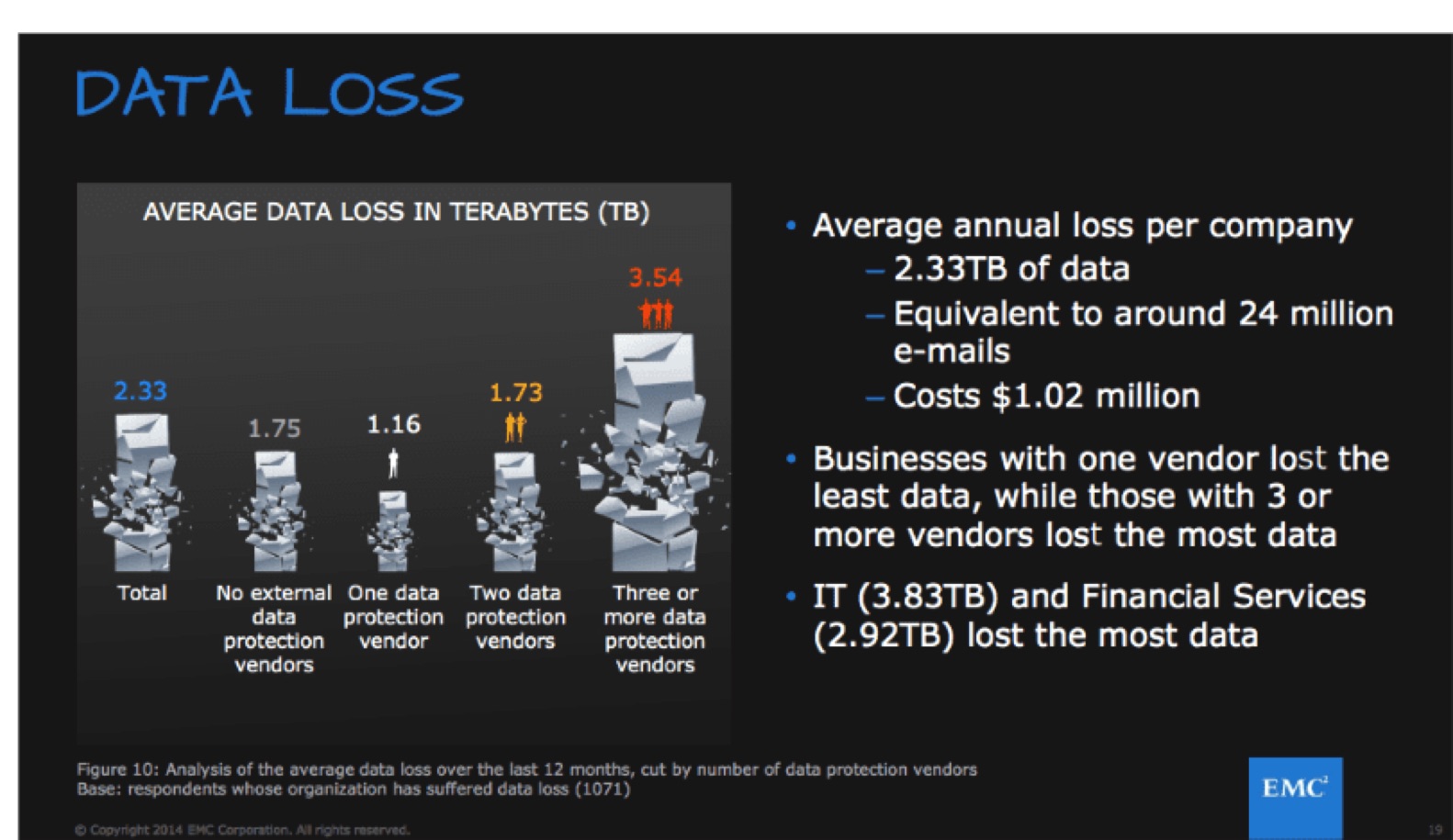Future Is Multi-Backup Applications – ESG
Reported by Actifio
This is a Press Release edited by StorageNewsletter.com on November 23, 2018 at 2:18 pm This article was written by Jay Livens, senior director, product marketing at Actifio, Inc., on the blog of his company.
This article was written by Jay Livens, senior director, product marketing at Actifio, Inc., on the blog of his company.
The Enterprise Strategy Group (ESG) recently published a research report entitled 2018 Data Landscape Survey.
As part of the research, they interviewed over 300 IT professionals on topics related to data protection. In this blog, the first of a series on this research, I wanted share some thoughts about their findings regarding backup application usage.
Here is a chart from the report:
Click to enlarge
While companies have always used multiple protection offerings, it is commonly assumed that the more solutions you use, the less reliable and economical your protection infrastructure becomes.
These findings were reinforced in a survey that I supported as illustrated below:
Click to enlarge
In short, the more backup applications you support, the higher the cost and the greater the risk of data loss! Wow, if this is true then why would customers tell ESG that they will have more backup applications in the future? It seems counterintuitive especially since cost and reliability come up as critical customer metrics. I think that this is reflective of changing market dynamics.
Change is in the wind
In the past, people relied primarily on traditional applications and databases running on-premises with separate hardware, and traditional backup and recovery tools did an adequate job protecting these environments. This is to be expected as most of today’s backup applications were created in the late 80’s. In case you are interested here is the general timeline:
- 1 NetBackup – 1987
- 2 IBM Spectrum Protect – 1988
- 3 CommVault – 1988
- 4 NetWorker – 1990
In the past few years, we have seen accelerating change. For example, users used to purchase hardware, compute and storage separately and now look to hyperconverged offerings to simplify management and operation. At the same time, application architectures have morphed from monolithic to flexible micro-service oriented using technologies like containers. Finally, the cloud has also emerged as a new source of highly elastic compute and storage. All of these changes have caused a fundamental re-thinking of IT, and specifically data protection.
As customers have traveled down the journey of innovation, they have come to realize the limitations of traditional protection tools and so are being forced to look at alternative ‘best-of-breed’ architectures. For example, they might choose one strategy for critical databases while choosing an alternative for their SaaS-based solutions.
In the past traditional backup applications maintained their presence by expanding their functionality, but the combination of accelerating change along with legacy architectures has made it difficult to keep up. As a result, we have a seen a proliferation of backup alternatives that are are targeted at specific environments. It is because of this trend that end users are looking to a multi-vendor protection strategy relying on ‘best-of-breed’ modern data protection products.
While this move to ‘best-of-breed’ certainly justifies the ESG results, I still wonder about the TCO and reliability of a large scale multi backup vendor strategy. I will keep my eyes on future surveys to see if this trend continues or if it is reversed over time as customers realize the challenges.















 Subscribe to our free daily newsletter
Subscribe to our free daily newsletter
